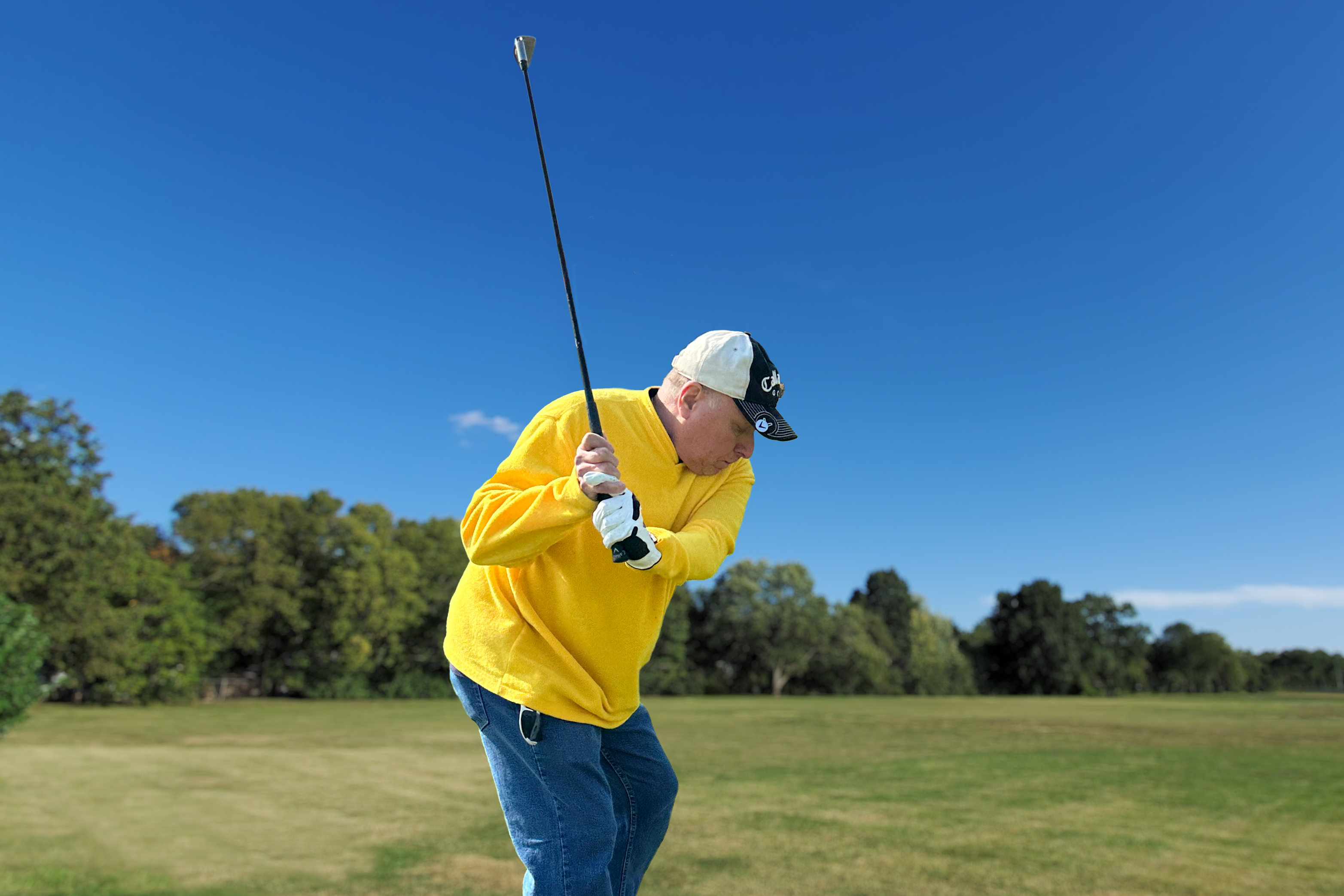Retired Physician Gets Relief from Debilitating Lower Back Pain with Innovative Minimally Invasive Treatment

David Dembinski, MD, suffered from severe lower back pain for more than a decade.
It started when the internal medicine physician tweaked his back while seeing a patient and nearly collapsed in agony.
He was evaluated for chronic back pain and tried various prescription pain killers for years, but the medicines only went so far.
He did physical therapy but didn’t experience any real improvement.
He saw a chiropractor consistently for six weeks, but still, nothing changed.
“About two years ago, it finally got to the point where I couldn’t do much,” Dr. Dembinski said. “I couldn’t walk very far without my back pain getting worse. I couldn’t golf. I was very functionally limited.”
He went to Saint Luke’s Pain Management Center in Overland Park, Kansas, to speak with his pain management specialist, Joel Ackerman, MD, about options outside of surgery and to come up with a personalized care plan.
“Dr. Dembinski had failed multiple conservative measures for the initial treatment for his back pain,” Dr. Ackerman said. “The back pain had become daily and debilitating, and he really needed some relief so that he could get back to activities that he previously enjoyed, including swinging a golf club.”
Starting with the least invasive treatment option, Dr. Ackerman recommended epidural steroid injections and facet joint injections targeting Dr. Dembinski’s primary area of pain. Although the injections helped temporarily, his pain returned.
“My family went to Cancun over Christmas, but I was only able to make it to the beach twice with the amount of pain I was in,” Dr. Dembinski said. “I just couldn’t do much.”
He returned to Saint Luke’s Pain Management Center where the team performed an MRI. The scans showed Dr. Dembinski had spinal stenosis—a narrowing around the spinal canal that can put pressure on the spinal cord and nerves.
Dr. Ackerman told Dr. Dembinski about an innovative procedure called MILD, which stands for Minimally Invasive Lumbar Decompression. The MILD procedure treats the root cause of spinal stenosis by restoring space in the spinal canal and has a quick recovery time.
A few weeks later, Dr. Dembinski underwent the painless MILD procedure and went home the same day.
After taking a couple days to rest, he said the difference was remarkable.
“Before I could only walk to the end of the driveway to get the mail, and now, I can walk a half mile easily and hit a few golf balls,” Dr. Dembinski said. “The improvement was almost immediate.
“Now, I’m optimistic about life.”
“Dr. Dembinski tolerated the procedure extremely well and his results from the MILD speak volumes on the results that we can see from relieving spinal stenosis pressure in the low back,” Dr. Ackerman said. “This simple, outpatient procedure—which does not require any stitches—is done in our surgery center with local anesthesia or oral sedation, and patients like Dr. Dembinski are usually back on their way home within two hours of their initial appointment time.”
Saint Luke’s Pain Management Center provides leading-edge care for patients suffering from chronic or acute pain with a wide range of treatment options to improve quality of life.
Other advanced therapies and procedures offered at the Pain Management Center include nerve and spinal cord stimulation, facet joint injections, radiofrequency ablation, epidural steroid injections, and trigger point injections.
The center’s multidisciplinary team works with each patient to create a personalized treatment plan to decrease pain, increase mobility, and reduce or eliminate dependency on pain medication.
Recent News
Article
Health News You Can Use: Importance of Lung Cancer Screenings
Article
Health News You Can Use: Managing Breast Cancer Treatment Side Effects
Article
Health News You Can Use: Early Onset Breast Cancer and Importance of Early Detection
Article
Health News You Can Use: What Happens After a Breast Cancer Diagnosis
Article
Health News You Can Use: Advances in Treatment for Metastatic Breast Cancer
News